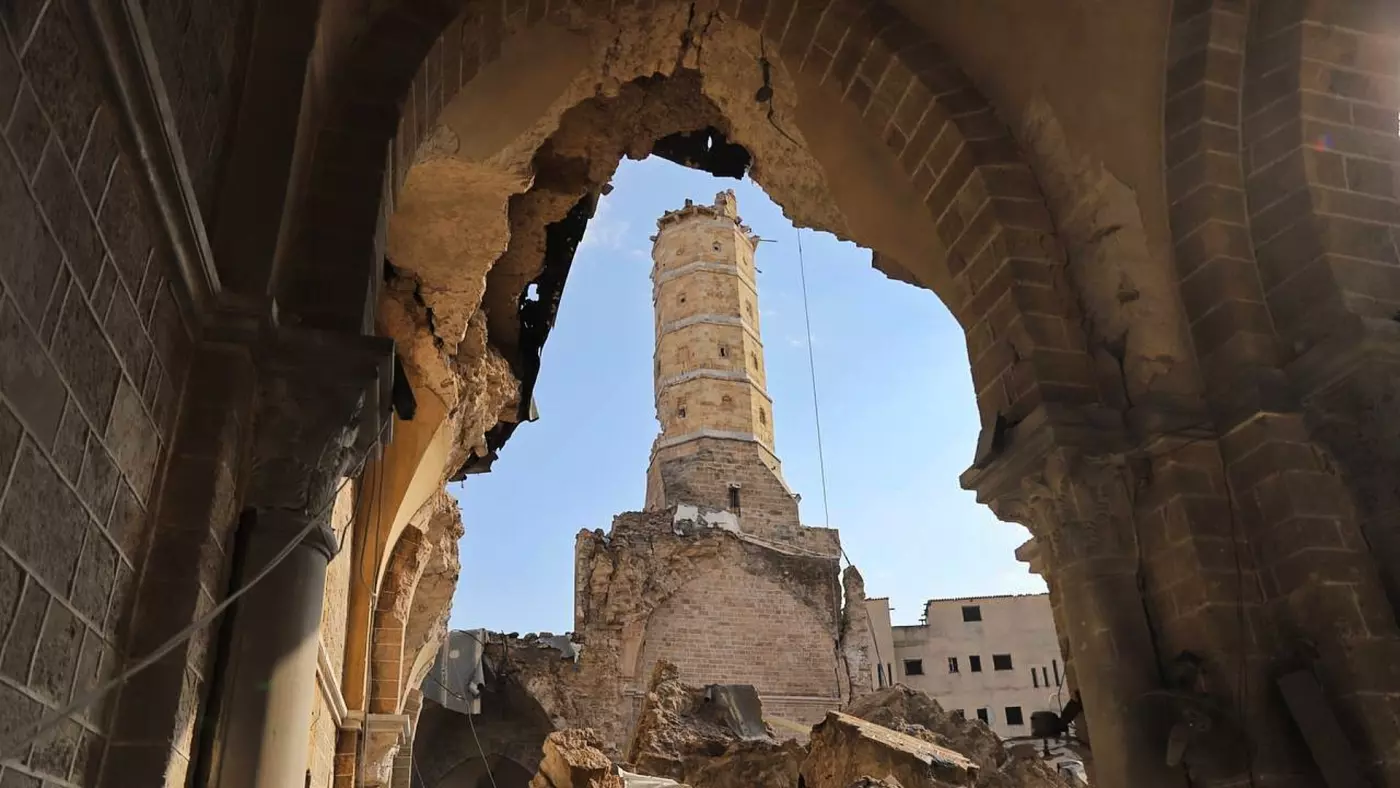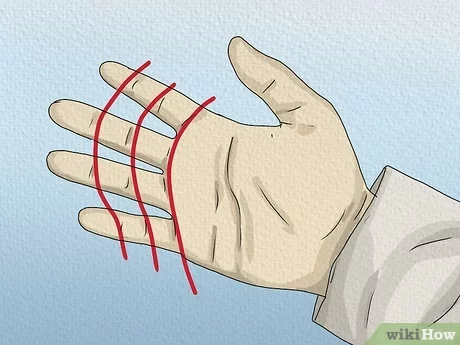 Yearly, monthly, daily, hourly, worshippers from around the world meet at the heart of Islam, the Kaaba.
Yearly, monthly, daily, hourly, worshippers from around the world meet at the heart of Islam, the Kaaba.
Positioned inside Mecca’s Grand Mosque, the Kaaba is Bait Allah, or the House of God, and represents the qiblah, the direction that Muslims face to perform their five-times-daily prayers.
One of the greatest venerations for the Kaaba is the amount of care, respect, art and dedication put into the very fabric that covers it, the sacred kiswah.
This year, like each year for hundreds before it, a new kiswah costing more than US$5 million will be gifted to the House of God on the 9th of Dhul-Hijjah month.
Perfumed and woven to perfection, it will welcome more than two million pilgrims performing Haj. Already more than a million people from around the world have arrived in Saudi Arabia for the annual pilgrimage.
The result of a great labour of love, the kiswah’s story and history is as deep and rich as the embroidery along its pure silk cover.
Dyed black and padded with white cotton fabric, it weighs more than 650 kilograms.
Quranic verses are beautifully and skilfully embroidered in different calligraphic forms by more than 200 talented artisans in threads of pure gold and silver.
The 14-metre-long kiswah is embroidered with 120kg of gold and 25kg of silver threads.
 Kaaba's Covering Since Prophet Abraham
Kaaba's Covering Since Prophet Abraham
Since the Kaaba was first built by Prophet Ibrahim and his son Ismail, the kiswah had passed through many stages, from different colours – such as white, green, red, a combination of colours and black – to different types of cloth, designs and forms.
Today it’s known and recognised for its beautifully woven piece of the finest black silk in the jacquard technique. The colour and design of the outer kiswah hasn't changed for many centuries.
In early Islamic times, however, the Kaaba was covered with fine multicoloured textiles, but from the late sixth century Hijri (12th century AD), a black drape was adopted.
The custom of incorporating woven, religious inscriptions into the cloth can be traced back to the eighth century Hijri (14th century AD).
Its characteristic zigzag design contains religious quotes executed in majestic Jali Thuluth script. Traditionally, they combine praise and invocations to Allah with the Islamic profession of faith (the Shahada): “There is no God but Allah and Mohammed is the Messenger of Allah”.
Important historic figures and whoever was in control at the time left their own mark and legacy on the kiswah, making this sacred cloth a story of the religious, social, economic and cultural factors that defined a particular time in history.
One rare kiswah exemplifies the great opulence and power of the person who commissioned it, Sultan Suleiman I, better known as Suleiman the Magnificent, who was the 10th and longest-reigning sultan of the Ottoman Empire, from 1520 to his death in 1566.
Dating back to 950 Hijri (1543/44 AD), and measuring 2.3 metres by 4.8 metres, this part of the kiswah is that of the door cover, known as the sitarah.
Elaborately designed with magnificent colours of red and green against black and gold, it has survived the test of time.
“It is the highest honour bestowed on any Muslim leader to provide the cover for the Kaaba,” says Ahmed Al Mansoori, who owns this rare kiswah, which is currently on display at his Crossroads of Civilizations Museum in Dubai.
Located in Shindagha heritage area, the museum is a private collection of rare antiquities, manuscripts, artefacts and weapons.
“The green colour is still vibrant, and it is the colour of Islam. The amount of work, detail and design reflects the great era of art and culture by Sultan Suleiman, one of the most prominent patrons of the Islamic arts and literature at the prime of the Ottoman Empire,” says the former member of the Federal National Council.
“He would commission the best weavers and artisans from around the empire. He wanted the tens of thousands of pilgrims who came to Mecca and to the Holy Kaaba to see this amazing kiswah, and be in awe of it,” he says. “The kiswah is a source of pride for all Muslims, and this particular one is a testament of that golden age of the Ottoman Empire.”
Gifting of Al-Kiswah
In the past, given the chances of fire, floods and risks of damage to the kiswah as it was being transported to Mecca, along harsh desert and mountainous terrain, a spare kiswah was always made in case anything happened to the first one.
During the Abbasid Caliphate (circa 750 to 1258 AD), improvements in the textile industry meant that the materials and techniques used to create a kiswah made it far more durable and last for a year.
Previously, it was changed two to three times a year because it would be torn by worshippers and the weather.
Among those used on the Kaaba is the kiswah in Al Mansoori’s possession. Its “spare” can be found in Topkapı Palace in Istanbul.
The name of the Ottoman Sultan Suleiman and the year 950 in the Islamic calendar are stated in elaborate calligraphy. It was tradition for whoever made the kiswah to put their name on it as well as the year it was made.
 This particular kiswah also has the names of the first four caliphates of the Islamic empire embroidered on it: Abu Bakr, Omar, Othman and Ali. It also has greetings and words of welcome to all believers who view it.
This particular kiswah also has the names of the first four caliphates of the Islamic empire embroidered on it: Abu Bakr, Omar, Othman and Ali. It also has greetings and words of welcome to all believers who view it.
“The authenticity and the date of the kiswah is confirmed by radiocarbon-dating technology, performed by the University of Tübingen [in Germany],” says Al Mansoori. “We are so lucky to have such a remarkable and sacred relic that reflects our rich Islamic history.”
The kiswah is of such great significance that pilgrims often end up tearing pieces off it as they perform Haj or Umrah, as a souvenir to take back home.
Every year, as per tradition at Haj time, on the ninth day of the Islamic month of Dhul-Hijja (expected to be September 23 this year), the Kaaba gets a new kiswah.
The older one is either cut up into smaller pieces or given out in full, as gifts to important figures around the world. Some pieces are sold to raise money for charity.
Variety of Contributors
A pre-Islamic figure from the period known as “Jahiliyyah time”, Adnan Bin Edd, a forefather of the Prophet, is said to be one of the earliest figures to have provided a kiswah for the Kaaba.
Following this, the rulers of the different Islamic periods all made it their duty to cover the Kaaba in the finest materials they had within the empire and beyond.
Although in the early period of Islam, presentations of cloths were often made by tribal chiefs, it rapidly became a state responsibility, which it remains.
At various times in the past and under the Central Asian Mamluks of Egypt, the major textile-making centres were in Egypt and Syria. Under the Ottomans, the kiswah was put together by specialized workshops in the Turkish cities Bursa and Istanbul.
During the Ottoman times the transport of the Mahmal (Kiswah's Caravan) was restricted to the Cairo and Damascus caravans and when the Albanian leader Muhammad Ali Pasha ruled Egypt in 1805, the manufacture of the Kiswah moved to Cairo.
In 1818, taking benefit from the world-class Egyptian cotton and the skilled Egyptian textiles workers who enjoy a cumulative experience of thousands of years from their Ancient Egyptian ancestors, the institution of Dar al-Kiswah was established in Cairo to make the Kaaba's Kiswah.
The Egyptian-made Kiswah was transported to Makkah in the procession for Hajj pilgrimage made with the Mahmal from Cairo.
Examples of the embroidered cloths, which were generally cut up for sale for presentation, which remains the tradition to this day, have at various times been sold at auction.
Since the early 20th century, all the religious textiles for the holy places started to rise in Mecca. In 1927, King Abdulaziz, the founding father of Saudi Arabia, ordered the establishment of Dar al-Kiswah factory dedicated to the manufacturing of kiswah in Mecca.
However, Egypt remained the main and the best source of Al-Kiswah in the Islamic World until 1961.
Mecca's Dar al-Kiswah has maintained the beautiful black kiswah with its gold and silver embroidery, making it one of the most highly recognized and revered sacred textiles in the Islamic world.
“During the blessed Haj season, when Muslims from all over the world converge on Mecca to reaffirm their faith and seek spiritual renewal, it is particularly appropriate that we should explore and learn more about some of the time-honoured traditions associated with Islamic pilgrimage and the holy places,” says Manal Ataya, the director general of the Sharjah Museums Department, which houses many important sacred textiles from Mecca and Medina.
“The custom of a ceremonial covering or kiswah to honour the Holy Kaaba at the heart of the Holy Mosque in Mecca goes back to the earliest days of Islam and tells stories not only about faith and the central significance of the holy city of Mecca in Islamic history, but also about exquisite craftsmanship and the believers – calligraphers, weavers, dyers, embroiderers – that were and continue to be involved in its annual creation,” she says.
Made in 1424 Hijri (2003 AD) is an example of the kiswah’s belt (hizam), measuring 47 metres, and consisting of 16 embroidered calligraphic panels, four on each side of the Kaaba.
This section on display at the Sharjah Museum of Islamic Civilization would have been positioned on the back wall of the Kaaba.
Its inscription, in the Arabic calligraphic font named Jali Thuluth, shows verse 26 of chapter 22 (Surat Al-Hajj) in the Quran: “Remember when We prepared for Abraham [Ibrahim] the site of the House: ‘You are not to associate anything with Me, and to purify My House for those who circumambulate and those who stand and pray, and for those who kneel down, prostrate.’”
Source : http://www.onislam.net
Post Disclaimer | Support Us
Support Us
The sailanmuslim.com web site entirely supported by individual donors and well wishers. If you regularly visit this site and wish to show your appreciation, or if you wish to see further development of sailanmuslim.com, please donate us
IMPORTANT : All content hosted on sailanmuslim.com is solely for non-commercial purposes and with the permission of original copyright holders. Any other use of the hosted content, such as for financial gain, requires express approval from the copyright owners.
 Sri lanka Muslims Web Portal Sri Lanka Muslims News Center
Sri lanka Muslims Web Portal Sri Lanka Muslims News Center



